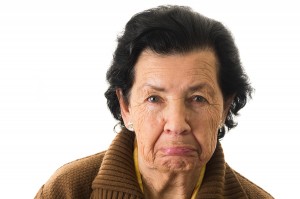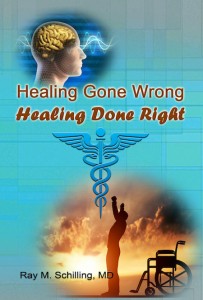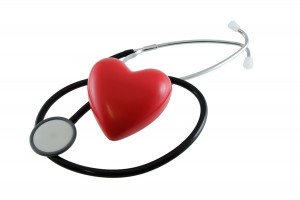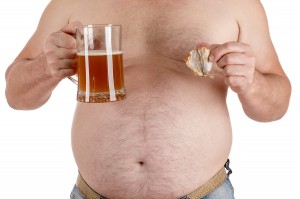Back in the 1980’s many physicians were hopeful that hormone replacement therapy in menopause (HRT) could extend the lives of postmenopausal women by approximately 10 years, if HRT would be started early enough. But the HERS study (Heart and Estrogen/progestin Replacement Study) in 1998 and the WHI study (Women’s Health Initiative) of 2002 changed things dramatically.
The HERS study did not show any benefit with regard to prevention of heart disease. Instead it showed more gallbladder disease (1.38-fold) and blood clots (2.89-fold) develop in the experimental group versus the placebo.
The WHI study was complex and had several arms. There also were some methodological errors in the study as pointed out here.
Instead of a decrease in heart attacks, there was an increase, when estrogen and progestin was combined. There were more cases of colon cancer, more blood clots and heart attacks in the placebo groups compared to the experimental groups. It seems that something went wrong with these trials.
Unknown facts about hormone replacement therapy in menopause
Premarin is not bioidentical to human estrogens
Both clinical trials used the wrong hormones to do the trials. If you use the wrong hormones in a trial, you would expect to get the wrong test results. Horse derived estrogen (equine estrogen) is hardly a match for bioidentical, human estrogen in women. But decades ago the drug manufacturer had decided that estrogen was easiest to manufacture on a large scale when urine from pregnant mares was used. The product contains conjugated horse estrogen and is known by the name Premarin. Premarin is not bioidentical to human estrogens.
Synthetic progesterone causes heart attacks
The other hormone, medroxy progesterone (MPA) is a progestin, a bad copy of the bioidentical progesterone that a woman’s corpus luteum of one of her ovaries produces. This is in the second half of her menstrual cycle. During pregnancy the placenta produces lots of progesterone to protect the pregnancy. As Dr. Masley, a cardiologist stated synthetic progestins cause heart attacks, while progesterone does not. Masley said: “Medroxy progesterone (MPA) increases the risk for heart disease and for breast cancer. I can’t understand why any physician would recommend medroxy progesterone during menopause, but it is still in use.”
Don’t use estrogen orally, but only by estrogen patch or estrogen cream
Next there is the question whether the liver changes the composition of an oral hormone tablet metabolically or not. The answer is: yes! Dr. Masley stated in the link above that oral estradiol, when compared to estrogen rubbed onto the skin, increases levels of inflammation by 192%. The C-reactive protein (CRP) can be measured with a blood test. The risk for a blood clot increases by 400%. A woman using estrogen should always use the estrogen patch or an estrogen cream with bioidentical estrogen to avoid these complications.
Measure hormones, don’t estimate
Measure hormones – don’t estimate: Hormones are constantly changing and if you don’t measure, you don’t know what you are dealing with. Dr. John Lee showed a long time ago that you should measure hormones and identify those women who are truly hormone deficient. These are the ones who need hormone replacement. However, you use only bioidentical hormones to replace and you replace only as much as is needed to normalize the levels. This is also the level where postmenopausal symptoms disappear. Lee noted: “A 10-year French study of HRT using a low-dose estradiol patch plus oral progesterone shows no increased risk of breast cancer, strokes or heart attacks.”
Measure progesterone hormone levels only in saliva
The elusive progesterone: when the physician measures progesterone as a blood test, it may come back as high while it can be low in a saliva hormone test in the same woman. Dr. Lee has pointed out that studies have shown that progesterone levels in tissue are usually higher by several factors when compared to blood levels and that blood levels are not reliable predictors of tissue levels (Ref.1). On the other hand he found that saliva levels have a good correlation with tissue levels in organs like the ovaries or the uterus. Dr. Lee preferred saliva hormone tests for this reason. When it comes to progesterone levels you can trust saliva test, but you cannot trust blood tests. Many physicians ignore that fact and strictly order blood progesterone levels coming to false conclusions.
Progesterone to estradiol ratio
We know that estrogen and progesterone must be balanced to avoid troubles of developing heart attacks or cancer. The link of Dr. Lee above stated that women without breast cancer have saliva progesterone hormone levels that are more than 200-fold higher than the saliva estradiol levels. On the other hand women with breast cancer have a ratio of less than 200 to 1 with respect to progesterone to estradiol saliva levels. There is a similar ratio in men. Here the ratio of testosterone to estradiol must be larger than 20 to 1. If this is not the case, he is at a higher risk of developing prostate cancer. Unfortunately many older men, when overweight or obese, have high estrogen levels and the ratio is less than 20 to 1.
Bioidentical hormones can prevent heart attacks and strokes
Masley has mentioned that in the first 6 years after menopause using a topical form of estrogen and micronized progesterone as tablets can minimize the risk of future heart attacks and strokes. But after 10 years it is less obvious what is the best solution. The question is what type of estrogen application is used. Is it estradiol or is it Bi-Est or Tri-Est, which are other topical estrogen applications. Tri-Est is 80% estriol, 10% estrone, and 10% estradiol while Bi-Est is 80% estriol and 20% estradiol. Tri-Est in particular would be very close to the natural composition of estrogens in a woman’s body.
What to do after 10 years of hormone replacement therapy in menopause
Given the insecurity what to do after 10 years of menopause, my suspicion is that there are other factors that play a role with respect to hormone replacement. A lot of women have extra pounds accumulated. Fatty tissue contains an enzyme called aromatase.
This makes estrogen from androgenic hormones including testosterone. The adrenal glands situated above the kidneys produce these hormones in menopause. The more overweight or obese a postmenopausal woman is, the higher the estrogen levels in her blood because of the action of the aromatase. Most physicians have not measured hormones in the past, but just replaced hormones monitoring only postmenopausal symptoms. This is changing. What I said under point 4 above is happening more.
Bioidentical hormone replacement practiced by naturopaths
Naturopaths tend to be more comfortable with bioidentical hormone replacement the way I have described it. If you did hormone tests (preferably saliva hormone tests) you would pick up higher estrogen levels and low progesterone levels with unfavorable progesterone to estrogen ratios as mentioned. These women do not need estrogen (they have it already in their systems). They need progesterone replacement only. A woman can take progesterone by mouth as micronized bioidentical progesterone capsules at night. It also comes as bioidentical progesterone cream for application to the skin. Here is another take on the use of bioidentical hormones.
Conclusion
Bioidentical hormone replacement is complex. It requires some basic knowledge of the facts mentioned above. I find it surprising that two separate research groups could not free themselves of the Big Pharma grip. In not doing so they unwillingly produced studies showing all of the undesirable side effects of using artificial hormones. When manufacturers modify natural hormones with unnatural side-chains, the end products are synthetic hormones. These do not fit the appropriate natural hormone receptors. The anti-aging community as represented by the A4M group (American Academy Of Anti-Aging Medicine) with more than 25,000 physicians worldwide has been saying this all along. Now we know that it is really true. Use hormone replacement knowledgeably and use bioidentical hormones!
References
- Dr. John R. Lee: “Natural Progesterone – The remarkable roles of a remarkable hormone”, Jon Carpenter Publishing, 2nd edition, 1999, Bristol, England.















